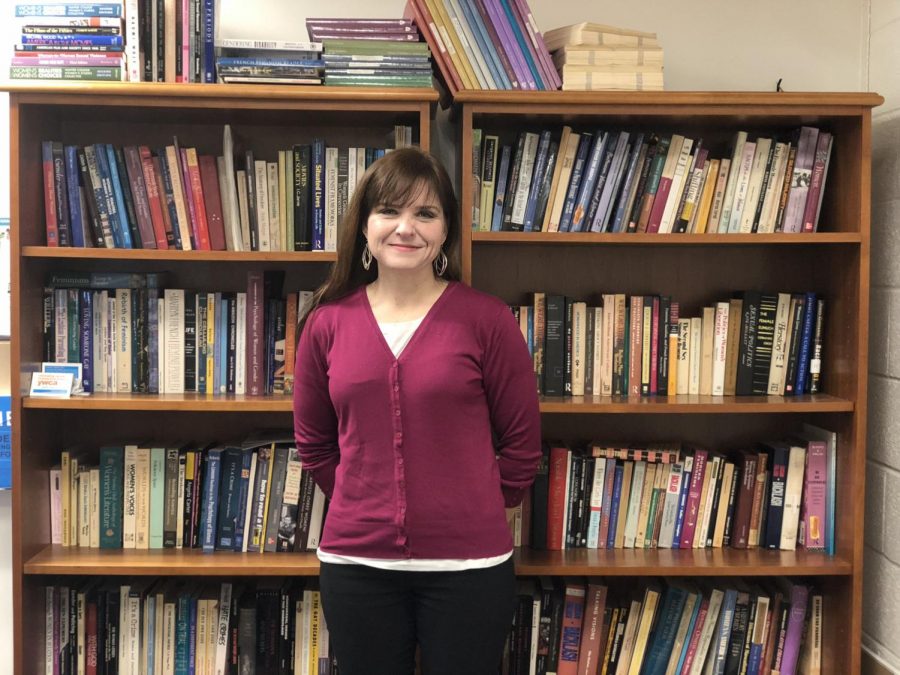Lone faculty member leads gender studies
Dr. Heather Rellihan poses in front of a gender studies-themed bookcase outside of her office.
March 1, 2018
One program on campus has only one full-time faculty member, but its courses span multiple disciplines.
Gender and Sexuality Studies is housed in the Humanities building, but it does not report to any one department.
Dr. Heather Rellihan, the program’s coordinator, said she prefers it that way.
Rellihan said the administrative work of being the program’s only full-time faculty member is a “legitimate challenge.”
But, she said, being under a specific department might narrow the program’s reach and focus.
“I’m a big fan of interdisciplinary education because I like the idea that students can learn from a variety of different perspectives,” Rellihan said.
“[And] it’s exciting for me because I get to talk to lots of different kinds of students.”
Of the 17 Gender and Sexuality Studies courses offered in the spring 2018 credit catalog, only Introduction to Women’s Studies was not cross-listed under at least one other department.
For example, the catalog lists Introduction to Lesbian, Gay, Bisexual and Transexual Studies under Gender and Sexuality Studies, American Studies and Sociology.
“I never thought of [Gender and Sexuality Studies] as being so interdisciplinary,” Casey Fegley, a sociology student who is also pursuing a certificate in Gender and Sexuality Studies, said. “There’s a lot of different areas that you can learn about within gender studies that you can take elsewhere.”
Prnaya Green, a first-year Gender and Sexuality Studies student, said she wants to be a history teacher. She said she wants to create curricula that are intersectional, meaning they will cover a variety of racial and gender perspectives.
“[Intro to Women’s Studies] is very eye opening,” Green said. “I love that it is intersectional, so it is applying to my other classes as well. … We don’t just talk about white women or straight women; we talk about women of all colors and different sexualities and [about] prejudices that affect … other marginalized groups.”
Some professors who teach courses in the program do so in addition to a full load of five classes in their own departments, while others teach it as part of their regular course loads, said Rellihan.
Suzanne Spoor, a professor in the English department, has taught Images of Women alongside four English classes each semester for more than 10 years.
“I love it,” Spoor said. “It’s my passion, [so] it’s never boring.”
Rellihan teaches two courses, Introduction to Women’s Studies and Gender and Mass Media. Although many students take the classes to satisfy AACC’s diversity requirement for graduation, Rellihan said her students are often excited about the classes.
“The issues that we talk about are things that [students] have been dealing with in their personal lives,” she said. “[The class] gives them a way to make sense of the things that are going on in their lives.”
Dr. Shirley Parry, an AACC English professor emeritus, started the program at AACC in fall 1997 under the name “Women’s Studies.”
In 2006, Rellihan took over the program, renaming it to Gender and Sexuality Studies in fall 2009 to better reflect the broad topics covered, including both LGBTQ and masculinity studies.
AACC students can earn a Liberal Arts associate degree with a concentration in Gender and Sexuality Studies. They can also earn a letter of recognition from the department for taking three classes in the field, or a certificate for taking five.












